Reactions and replies to part 1 (below) of this post were interesting… Quite a few people on my Facebook page pointed out they had the exact same products at Costco stores in America. I was surprised to be told that Costco in the U.S. carries quarts of Fallot mustard, kilos of fleur de sel, Fromage frais, raw milk Camembert, and bags of candied chestnuts. Things must’ve changed since the last time I was at a Costco in America. But when I went to Costco in France, it was interesting to see which French specialties, such as Camembert du Normandy, salt cod for brandade, and duck thighs from ducks that are raised for foie gras, were available here. Methinks not everything is the same at Costco in America. A few expressed dismay to see superstores were to France, but French hypermarchés, some of whose stores are much larger than Costco’s, have been in France for a while; E. Leclerc has 754 stores, and Carrefour, which opened its first hypermarché in 1963, has 248 in France. Both of them have over a thousand smaller stores in France. So they’re not new. The French are no strangers to shopping in big-box stores, since, as small shops (and populations) in small towns and villages diminished, hypermarkets attracted people with their massive selections of everything, from groceries and housewares to gardening equipment and school supplies. It just got easier for people to get everything in one place, and many big-box stores toggled their selections to appeal to locals, featuring regional cheeses and other foodstuffs. Another big issue in recent years in France has been purchasing power, as people have been upset and striking over high prices, including food. And the big-box stores offer more value for people’s bucks. While French people do shop in big-box stores, those stores don’t carry gallon jars of mayonnaise or bed pillow–size bags of potato chips. I can’t speak for everyone, but from what I’ve seen, it’s not common to shop that way, although I live in a city where space is tight, so the idea of buying in bulk isn’t probable. On the other hand, I once asked a French friend: Who buys the frozen bread at Picard stores in France? She replied that people who live out in the countryside do. That makes sense, although it doesn’t explain why someone in Paris would buy it, where there’s a bakery on every corner. Perhaps the price has something to do with it, but most of my friends have freezers that could barely hold a whole chicken, so I’m still baffled by the frozen bread. Anyhow. I’m one of those people who love supermarkets and go to them in other countries when I travel, finding them a fascinating window into other cultures, reflecting how a people shop and eat. While I was a little underwhelmed by the Costco I went to in France, which was a little less than an hour’s drive from Paris, what they carry intrigued me since I imagine they carefully decide what to put on their shelves for French shoppers. It wouldn’t be France without cheese. Oddly, the yogurt aisle was kinda paltry, since that’s often one of the largest aisles in French grocery stores. But there were quite a bit of French cheeses and some good quality ones at that. What was great was the selections they sold. One selection was a variety of goat cheeses, above, and the other was boxes of four raw milk cheeses from Normandy, below. All the cheeses in the packages have the yellow and red AOP seal on them, a quality assurance label for cheeses in France, and in Europe, that are produced under very specific standards and conditions, such as being made with raw milk and created from milk from a specific region. Mexico makes some very good cheeses, but I wasn’t aware that cheddar cheese was part of their culinary canon. But they had some cheese labeled as “original” Mexicana cheddar slices. However, as someone who has made Mexican food here over the years, I’ve had to track down things like tortillas and queso fresco in Paris. So I understand that sometimes you have to sacrifice, um, authenticity for availability. Mexican restaurants in Paris use feta in place of queso fresco, for example. Or at least call it that so locals know what it is, even if it isn’t. Still, I wondered that there must be something about the Mexicana cheddar cheese that made it original, and when I turned the packages over, I saw the bits of chiles in it. A few years ago, we were staying with people in the countryside, and I was the only one who showed up at breakfast wearing my pajama bottoms. One woman at the table took a look and said that I was “très original,” which I’m not sure was meant as a good or bad thing, which I think was the idea. I put a large wedge of Comté cheese in my cart and passed on the precut cheese slices. Every culture has its umami, which is briefly defined as something that has a savory taste that people can’t get enough of. For Americans, the cliché is that we all put ketchup on everything, a condiment that has also become popular in France. But there, the most popular condiment by a kilometer is Dijon mustard. I didn’t buy the quarts of mustard they were selling as that was too much mustard for us, especially since mustard, once opened, degrades in strength and quality the longer it sits. Kimchi is similar. It changes the longer it sits and can get fizzy and acidic. It works well for fried rice or kimchi jjigae, but I’ve been spending an inordinate amount of time going through leftovers in my kitchen lately, so I passed on the family-size kimchi since the two of us can’t go through 1.5kg (3.3 pounds) of kimchi in a jiffy. But it’s nice to see it alongside Aligot in the Costco France refrigerator. While quite a few people told me their local Costco in America has the same products as we have here (yay for being able to get Aligot in America!😅), I’m pretty sure most Costco stores in the States don’t carry cuisses de lapin, or rabbit. Rabbit is certainly divisive here, as well as there. I was at a dinner party in Paris, which was a mix of people from France, Switzerland, and Italy, and I was the only one who said they ate rabbit. Everyone else made a face at the idea of it. Despite its low environmental impact, and being a good source of protein, I’ve never cooked it. They used to sell rabbits whole at my market, with their heads covered in tin foil, but I’m not sure Romain would be on board with it. He’s never asked me to make it. Romain used to make fun of me for eating chicken all the time, calling me “monsieur poulet.” It made me realize how much we ate in America. Those two-packed farm-raised chickens, above, were priced to move, although I was hesitant to fill my newly emptied freezer with more food after spending a whole day clearing it out. French beef can be a rather tough affair. We’re not big beef eaters, although when we came out of our month’s long confinement, I bolted to a nearby bistro for steak-frites and a carafe of red wine. In the last few years, there’s been a lot more Angus beef featured on menus in France. And there was quite a bit of it for sale at Costco. I didn’t have my glasses on and when I asked Romain where it was from, he said “LU,” which I thought maybe was Lithuania. But when I dug my glasses out of my bag, I saw the meat was from the UK. Thankfully, Brexit didn’t stop the flow of good beef to France. And they had brisket! It’s one of the cuts of meat that Americans who’ve moved to France ask me about finding. One wholesale butcher imports it from the U.S., but they only sell to professionals, and you have to buy the whole thing, which is a lot of beef. (And…freezer space.) I wrote about what to use in France here, accompanied by the diagram below, which came with a recipe a friend’s mother gave me. She moved here in the 1950s when she married a Frenchman and next time I go, I’m going to pick up a brisket for her. How times have changed… At the meat aisle, Romain was starting to show signs of fatigue. I know that look, which means I have about fifteen minutes, max, to wrap things up and head to the cashier. After swinging back by the aisle where the bags of pecans were, to put three more bags in my cart, since I now have more room in my freezer ¯\_(ツ)_/¯ … we headed to the “food court,” which it’s called in the U.S. Here it’s the “resto club.” The “club” was a large window with pictures of what to order on the wall above it. My friend from the States had sent me an urgent text while I was shopping, asking if I wanted chicken or cheese. I was in the produce section trying to decide if I wanted to buy the two-pack of Driskill’s blackberries, which was well-priced, but they generally are hard and sour. Hmmm, what to do… We don’t get blackberries in Paris and here was a two-pack of them, a very Costco dilemma you might have had, I’m sure. But I ended up putting them back so I could focus on the pressing issue of chicken or cheese. But first I had to clarify what “chicken or cheese” was. After the fifth text, then a phone call, it was determined he was at the restaurant club ordering a pizza, which needed to be ordered in advance…and did I want chicken or cheese on my pizza? Chicken on pizza didn’t sound like a good idea (and that’s coming from someone who isn’t entirely against pineapple on pizza, although my preference is always, always going to be pepperoni), so I said “cheese,” since the memo should have been to Costco France to offer pepperoni, not poulet. The pizza was kinda terrible. I’ve had some not-great pizza in my life, but pizza is pretty hard to screw up. It was flavorless and cardboardy. Even Tasting Table ranked it as the worst item to order at Costco. Romain didn’t love it either. The hot dogs fared much better. I’m not a big hot dog eater and growing up, when offered the choice, I always went with the hamburger. I wasn’t sure if French people put mayo on their hot dogs, which was offered in the dispenser, but I went with mustard and relish on mine. I added some ketchup after I took the picture because I know there’s a whole hoo-haa about not putting ketchup on hot dogs. But I’m already in enough hot water as it is and since they didn’t have choucroute (sauerkraut), I needed something tomatey to get the taste of the pizza out of my mouth, and mind. Perhaps the biggest difference between the U.S. and French Costco is there were hardly any lines. In fact, most of the checkout lines were closed as the store wasn’t very busy. My visiting friend had misplaced his receipt, which is a double-whammy at Costco France. At all Costco stores, you need to show your receipt as proof of purchase to leave, but in France, even at regular grocery stores, they have stern guards at the doors to make sure you’re not stealing anything. That assumption of guilt makes it hard to go shopping in multiple places as you have to justify everything you bought everywhere else to the guards. I get around that by only shopping at one store at a time, then going home between each purchase to bring whatever I bought home, before heading back out to the next store. So what did I bring home? I didn’t come home with a 10-pack of poulet et surimi sandwiches…(chicken salad definitely isn’t a thing in France.) I’m not big on supplements, but I started taking melatonin for sleep last year, and it seems to help. When I lived in the U.S., the melatonin I took didn’t do much for me. But when I read it wasn’t regulated so there could be n’importe quoi in it — the NYT reported 22 out of 25 melatonin samples they had tested contained wildly different amounts than advertised — I tried it in France, where it is regulated, and it helps. I also started taking magnesium since my doctor told me I should, so picked up that too. Both were literally 75% less than they would have cost at the pharmacy. We eat a good amount of cheese, and one of our favorites is Comté. This one, aged for at least 15 months, is from a good producer, so I picked up a large wedge of it. It was immediately opened when we got home, and we’ve already gone through half of it a week later and a neighbor who had dinner in our apartment last night said it was the best Comté he’s ever had. I’ve been using a lot of eggs testing recipes for my new book coming out this year, saving all shells to crumble and surround plants in our garden with, to thwart the slugs that ravaged our garden last year. So I picked up a flat of Label Rouge, free-range eggs, which cost €4,80 for thirty eggs. I also got California pistachios, which we love to snack on during apéro hour. I bought the six duck thighs, above, to make my easy duck confit since my cousin was coming from the U.S. to visit and she loves confit. The labels said the ducks were gras (fat) and yikes, they weren’t kidding. Around 3 cups (700ml) were rendered out as I slowly baked them in the oven, which usually only a few tablespoons render out. So I saved the duck fat and have a few jars in my refrigerator that should last me the rest of my life. I was glad I skipped the 2 kilo bags of chocolate chips as two readers said they weren’t good (one said even her young son wouldn’t eat them), but was happy to have lots of pecans, pistachios, déssalée/desalted salt cod, which came in a handy three-pack great for making brandade, a nice variety of herbs for our hopefully slug-free garden this year (I’m also trying nematodes in addition to the egg shells), and a big wedge of cheese in my cart. There was also three-quarters of an uneaten pizza, no Stretch-Tite (boo!), and the satisfaction of finally seeing what all the fuss was about when Costco in France opened. Their aim has been to open 15 more stores in France before 2025, which I don’t think has happened — right now there are only two — so I think they’re waiting to see what happens with those two, although a third is slated to open by the end of the year in Alsace. And if they ever decide to open one in Paris proper, that would be très original. You're currently a free subscriber to David Lebovitz Newsletter. For the full experience, upgrade your subscription. |
Wednesday, April 23, 2025
A Visit to Costco France, part 2
Subscribe to:
Post Comments (Atom)

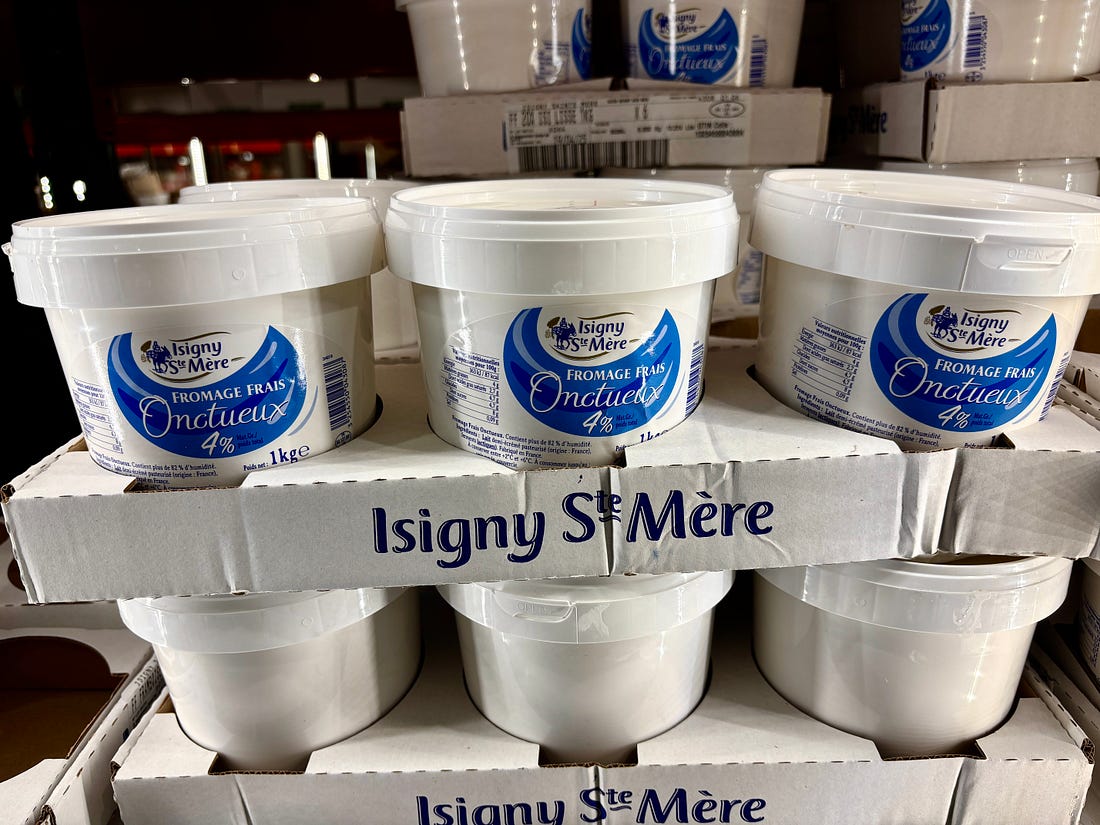

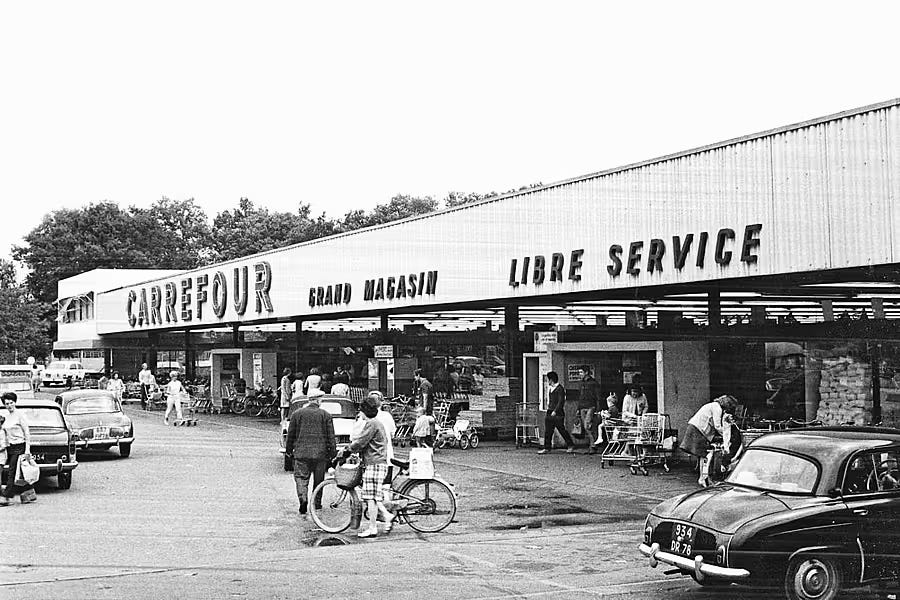
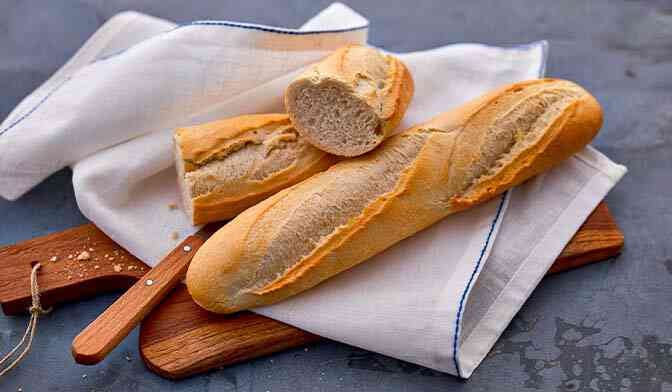

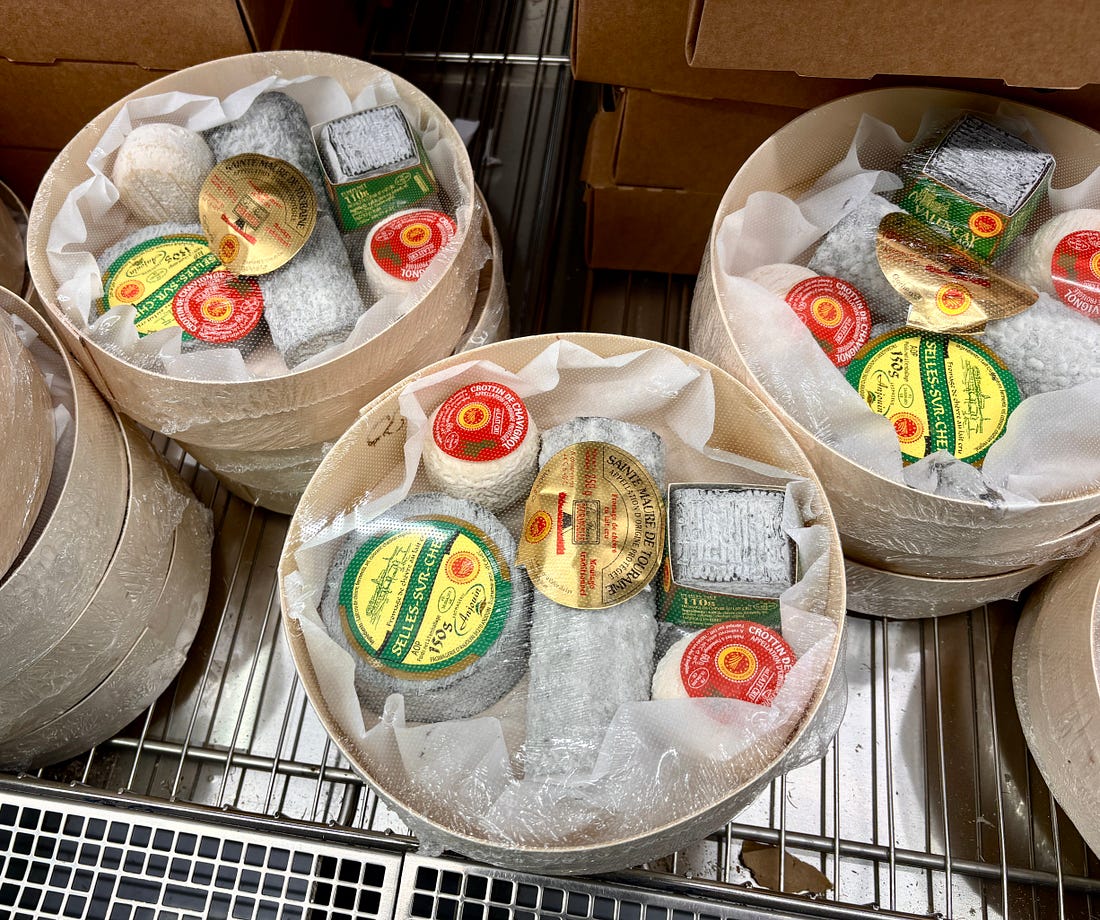
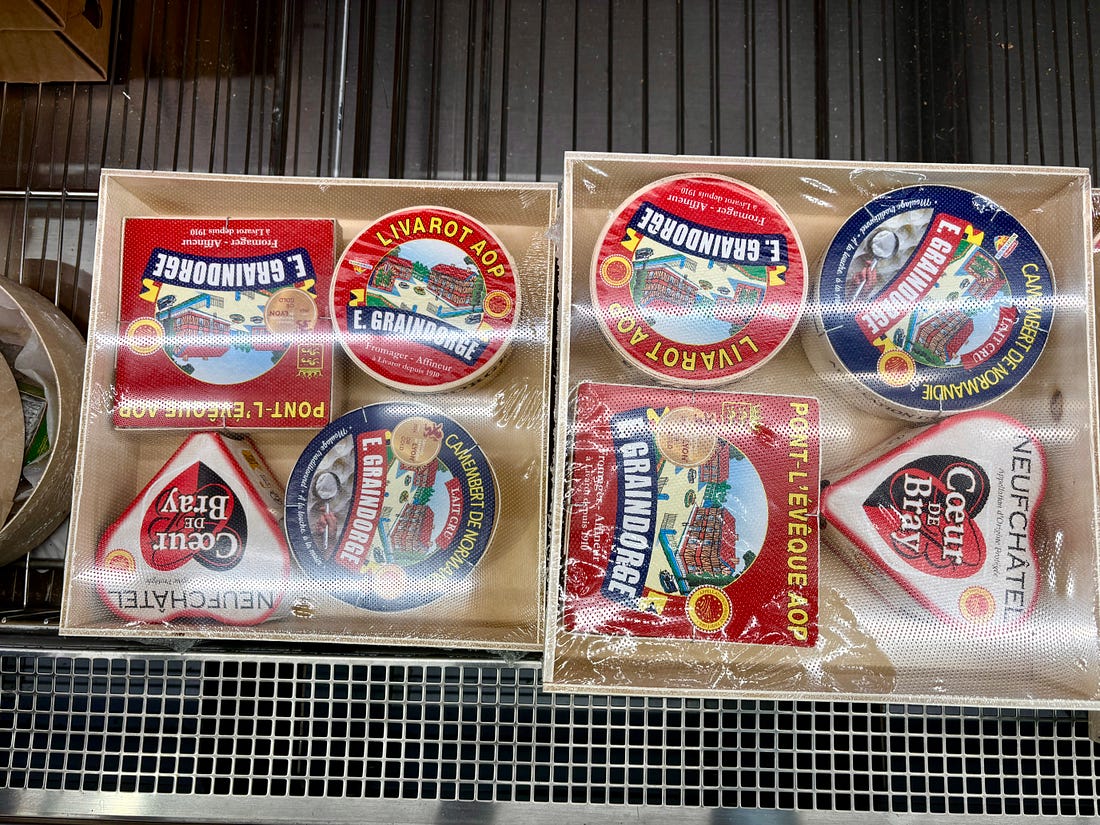
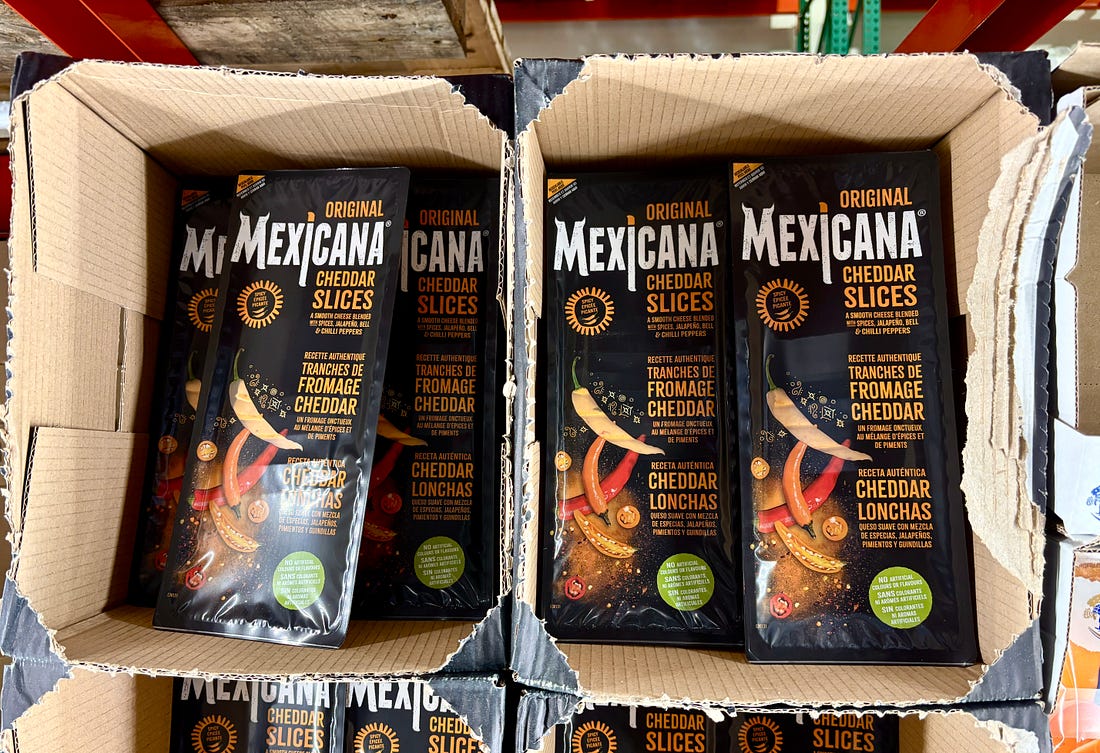
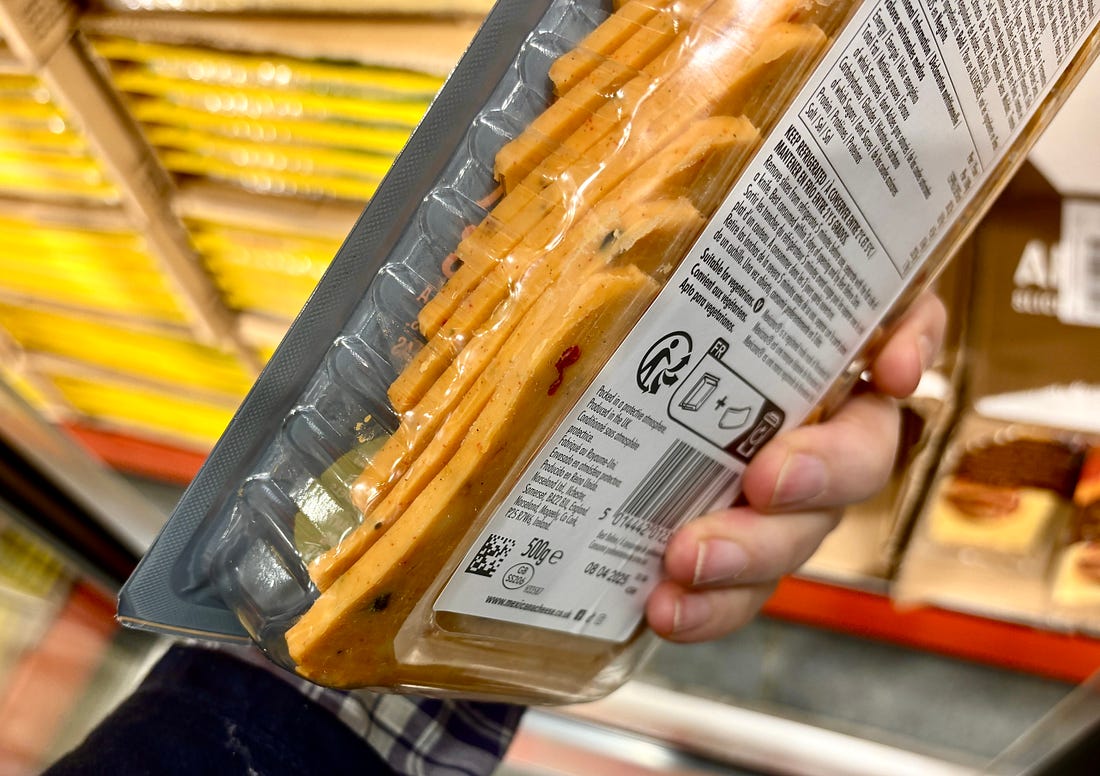
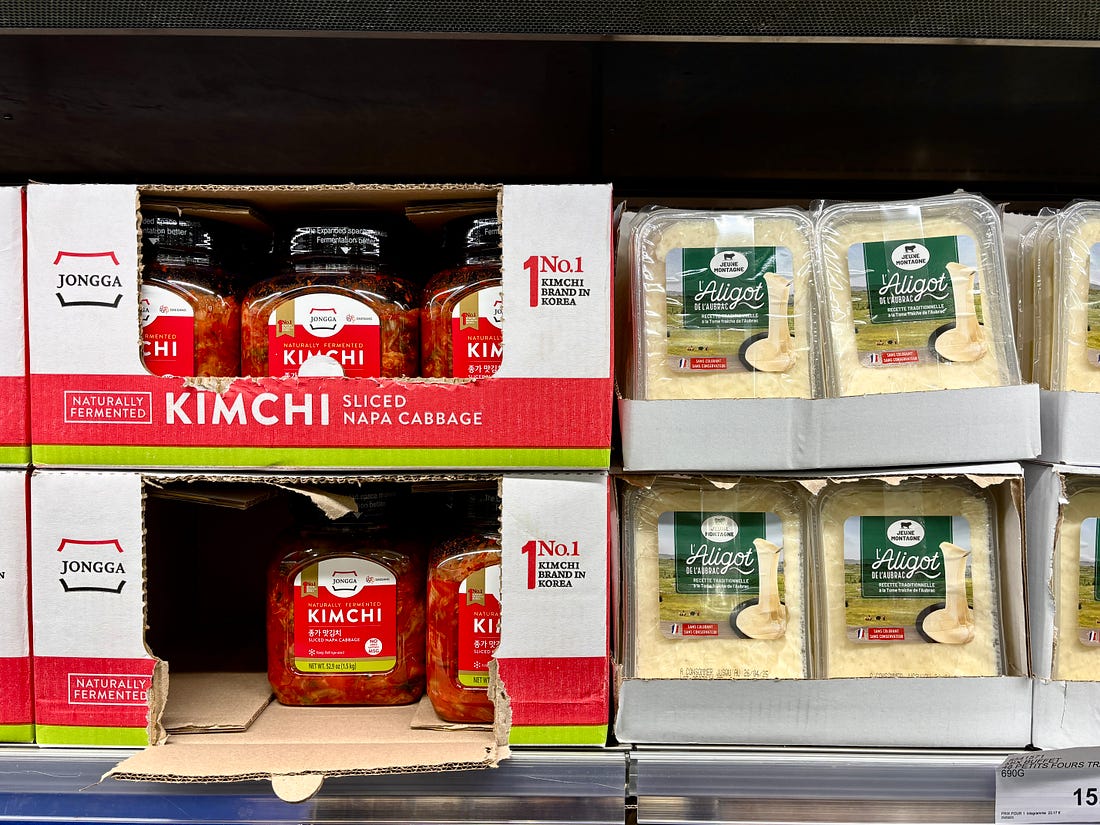
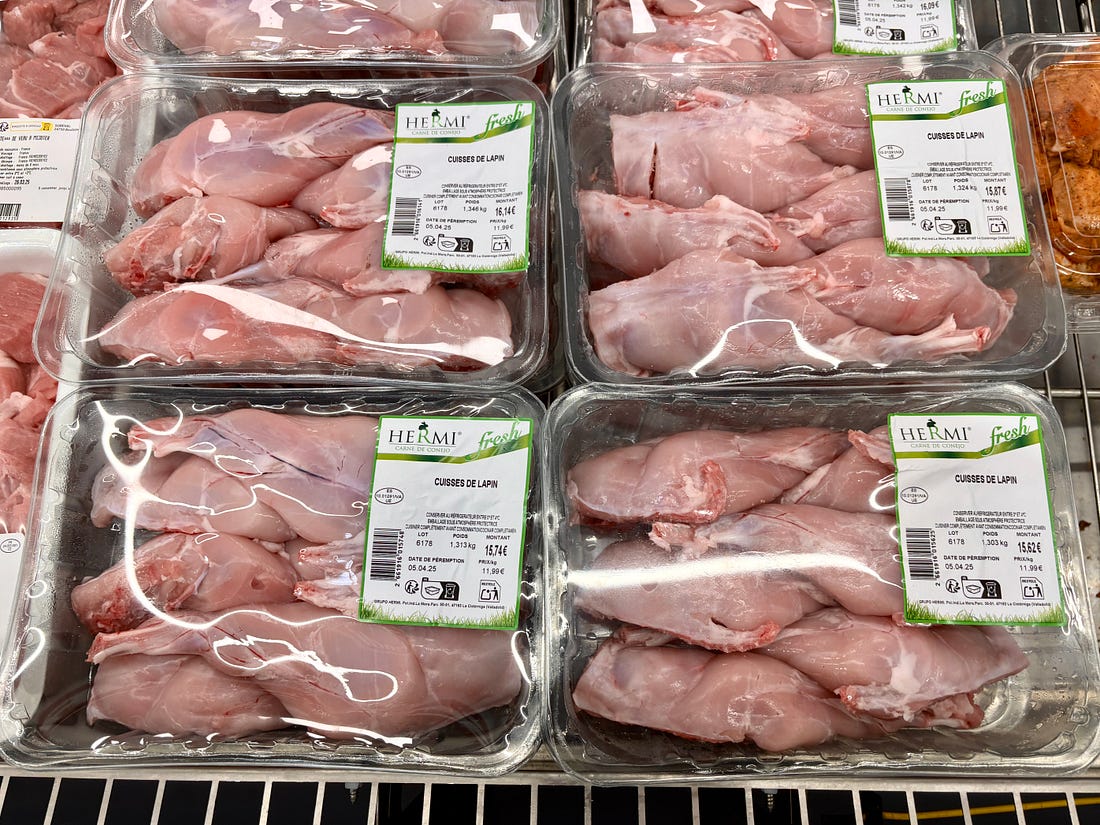
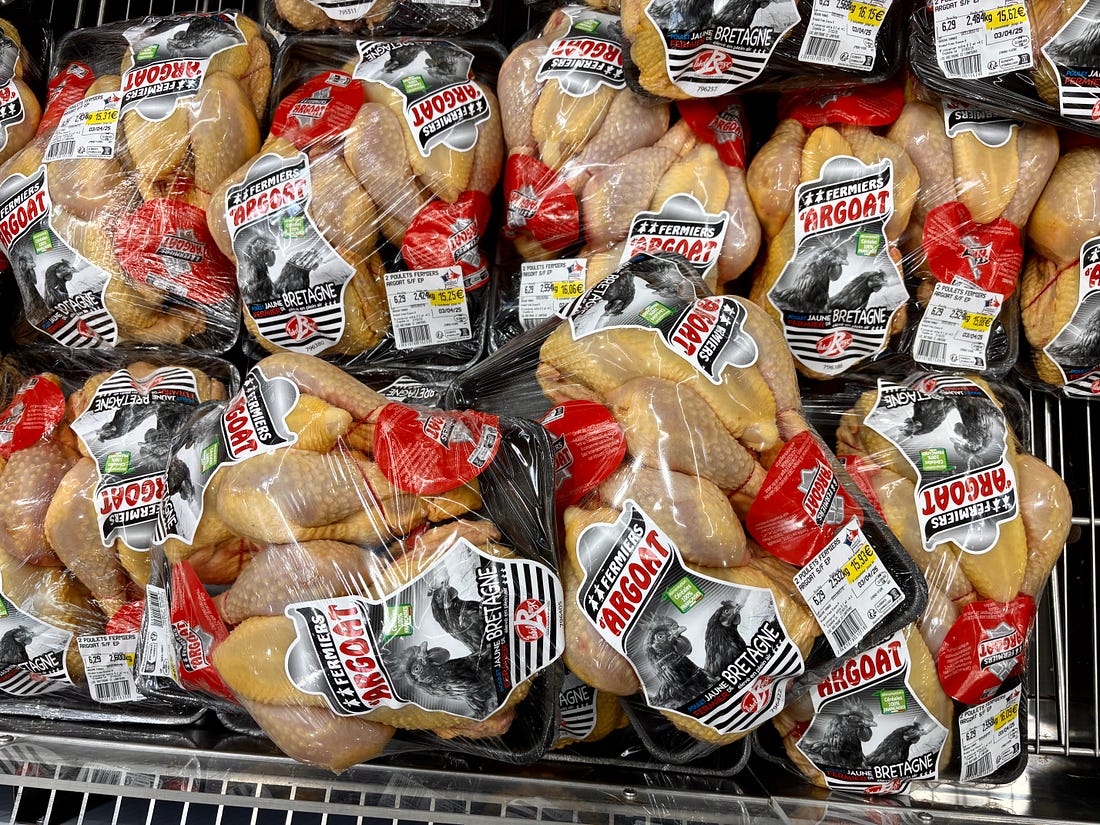
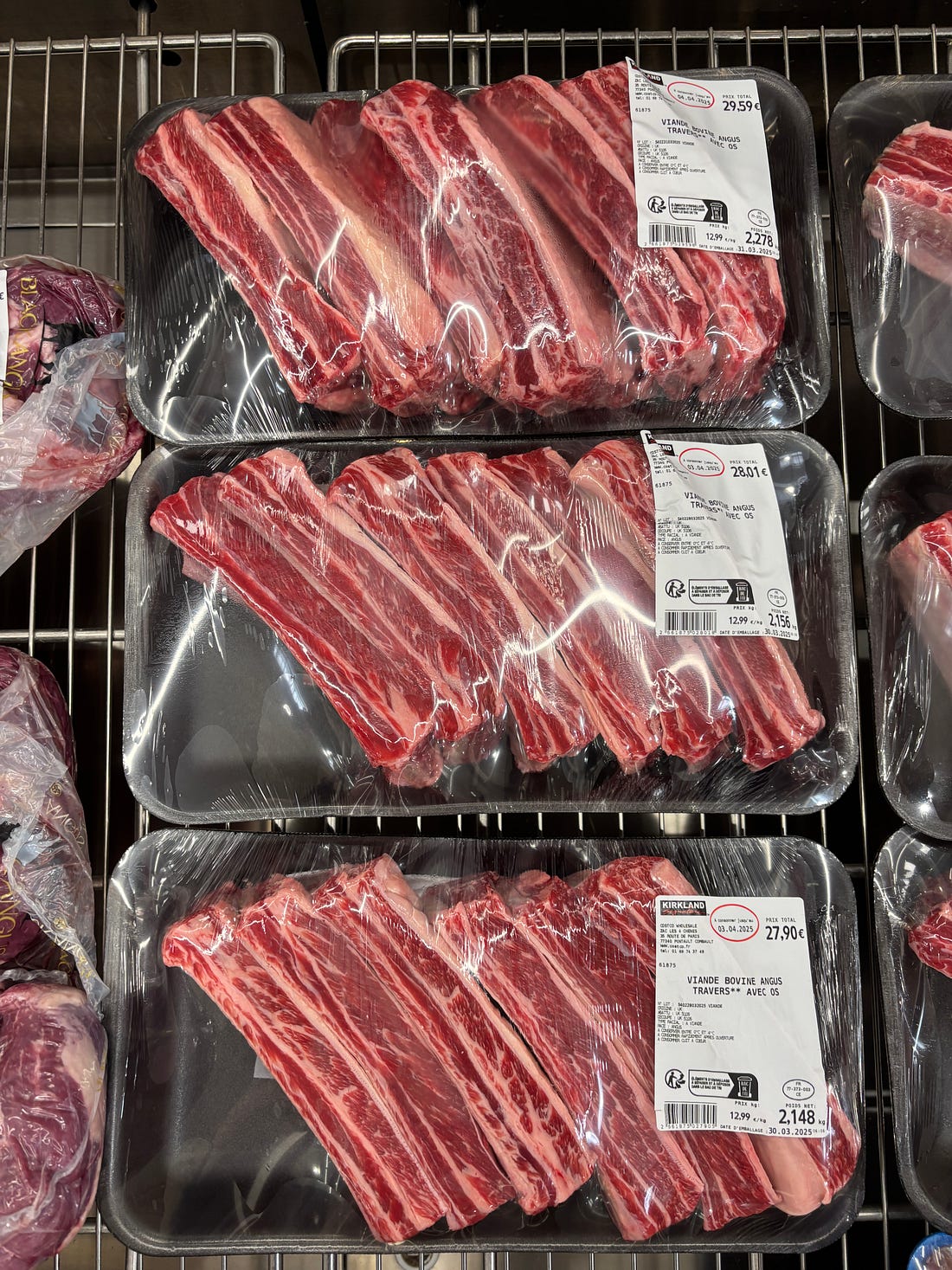
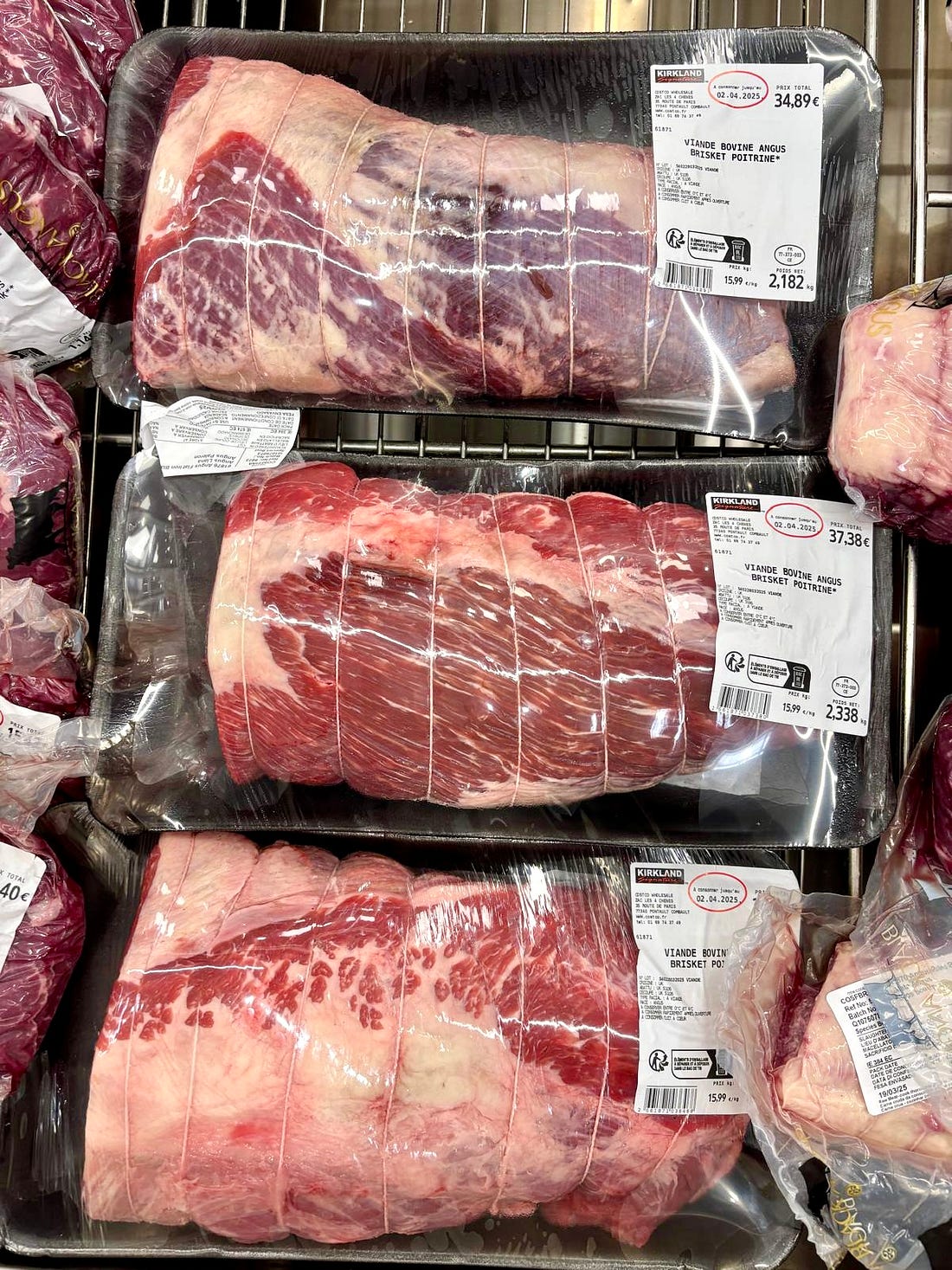
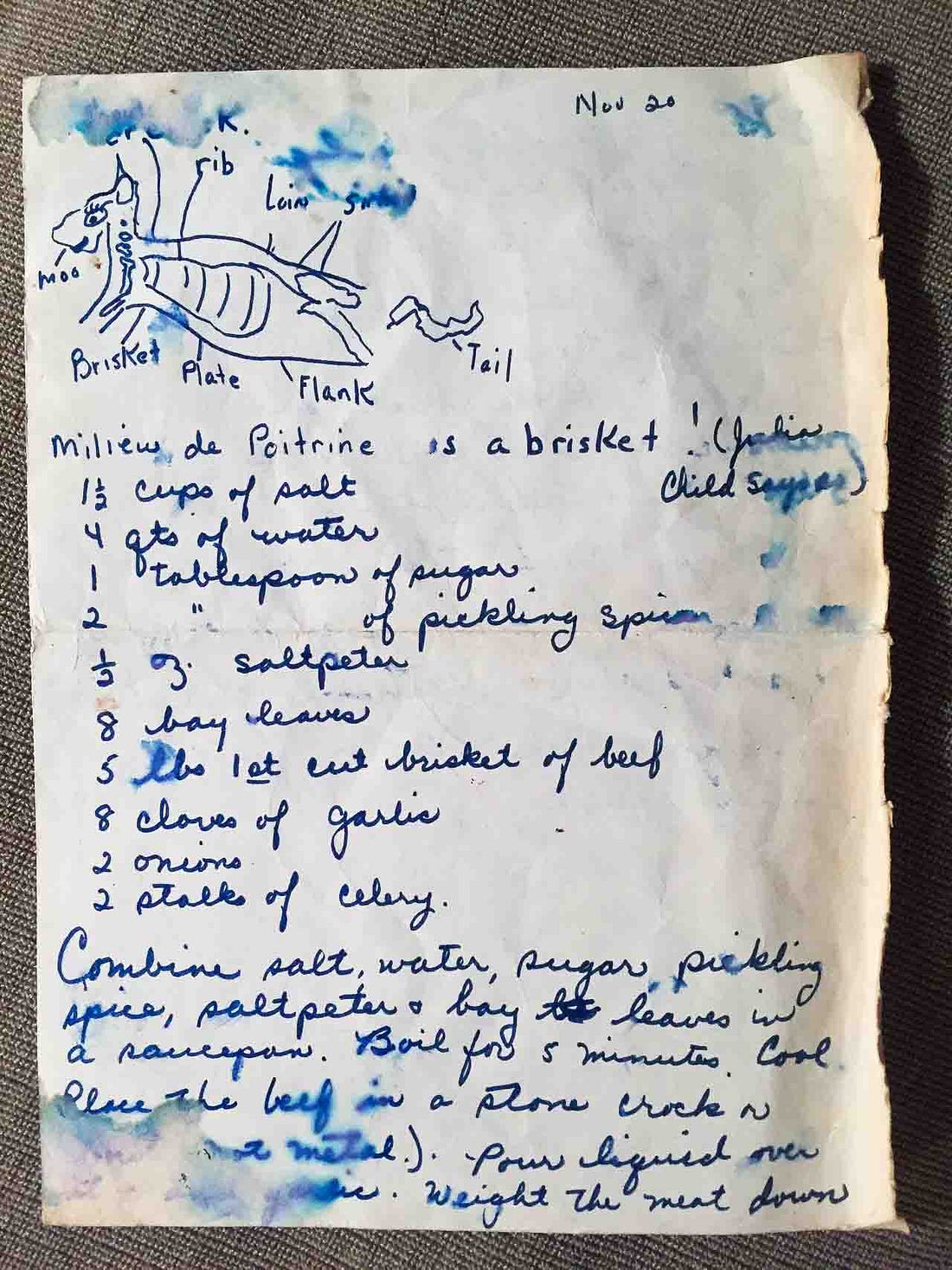
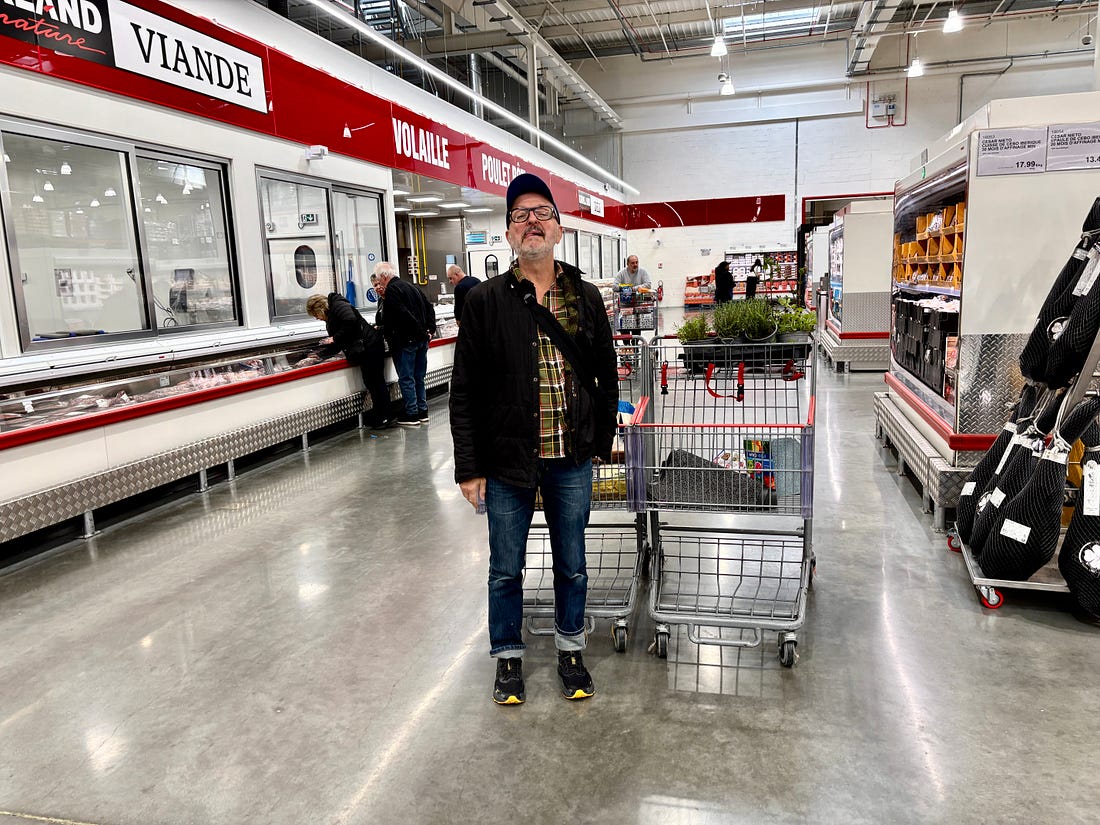
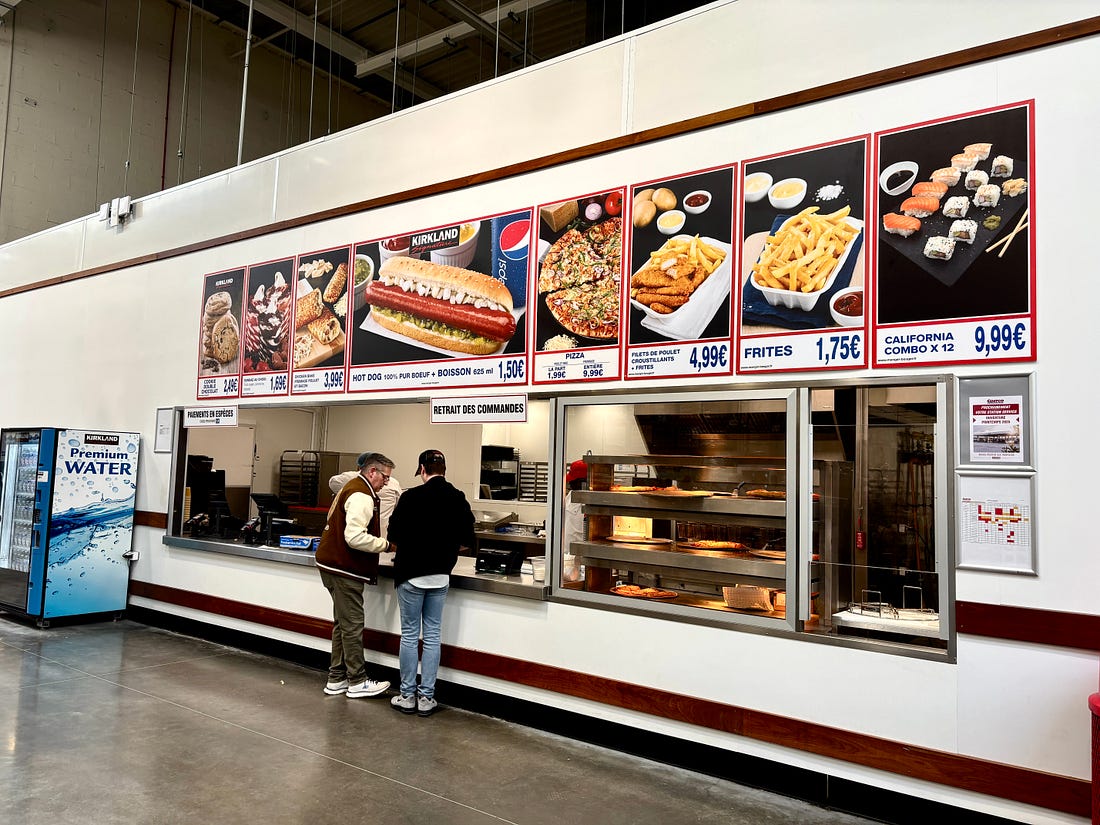
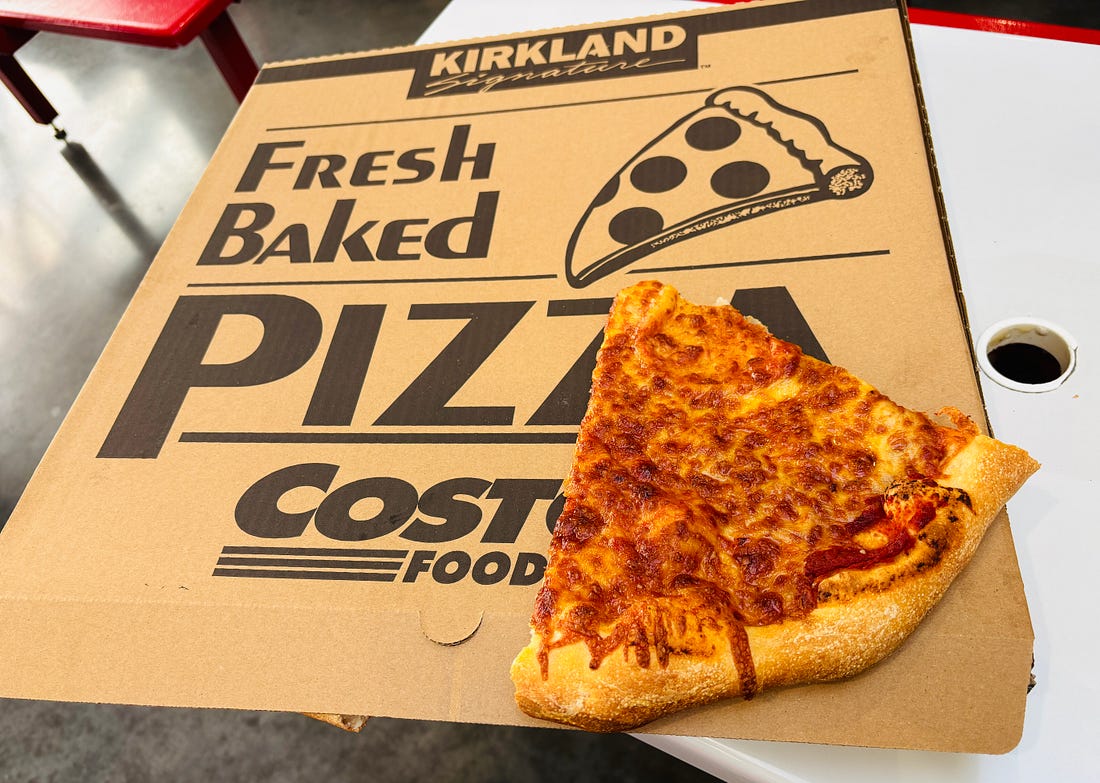
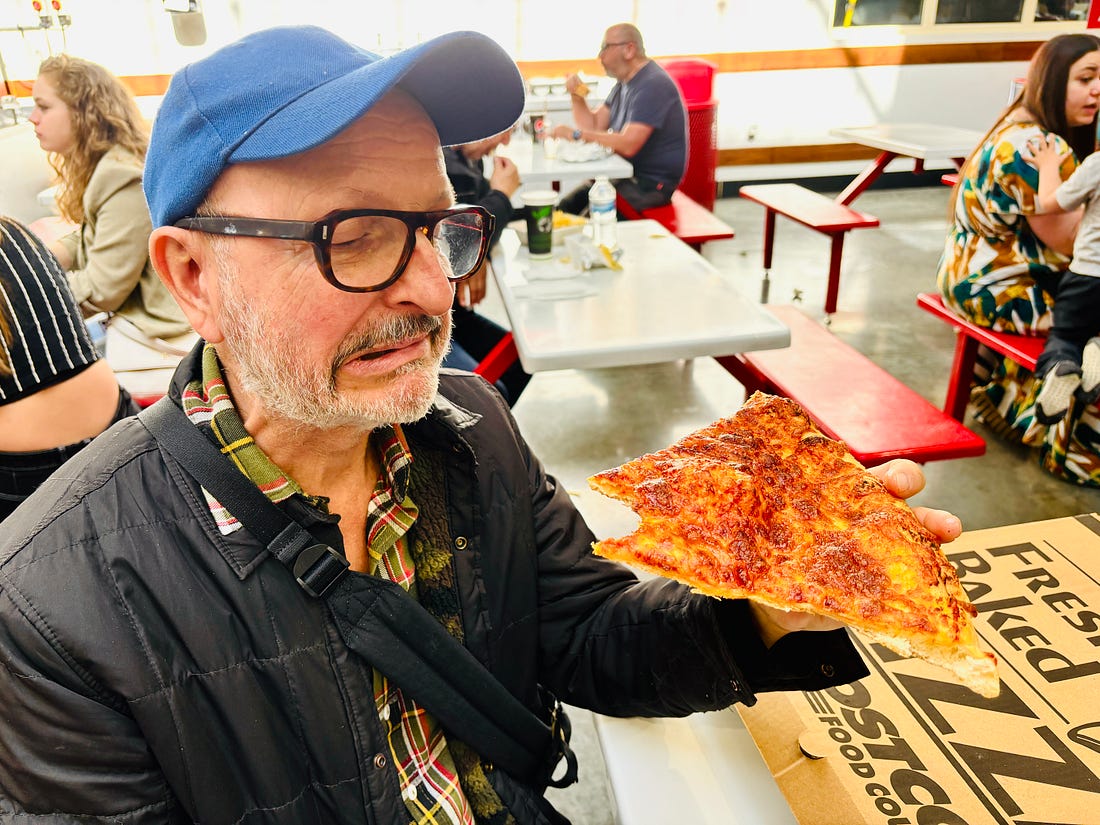
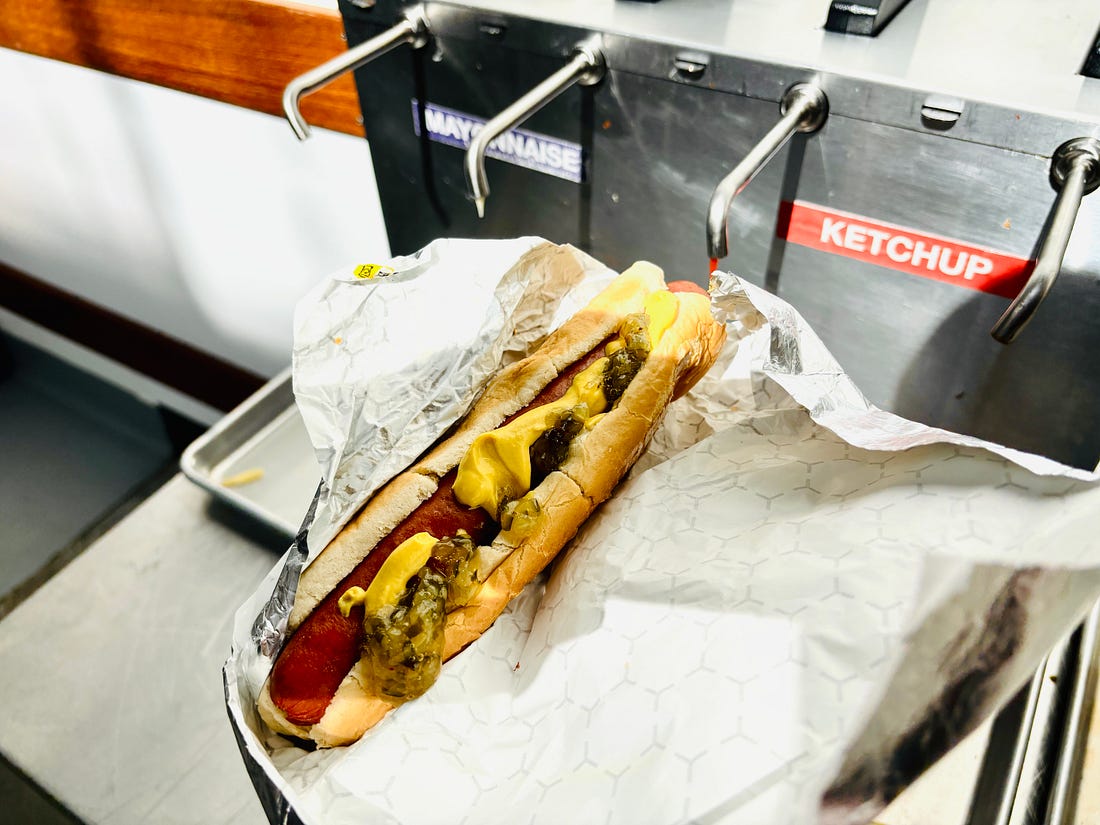
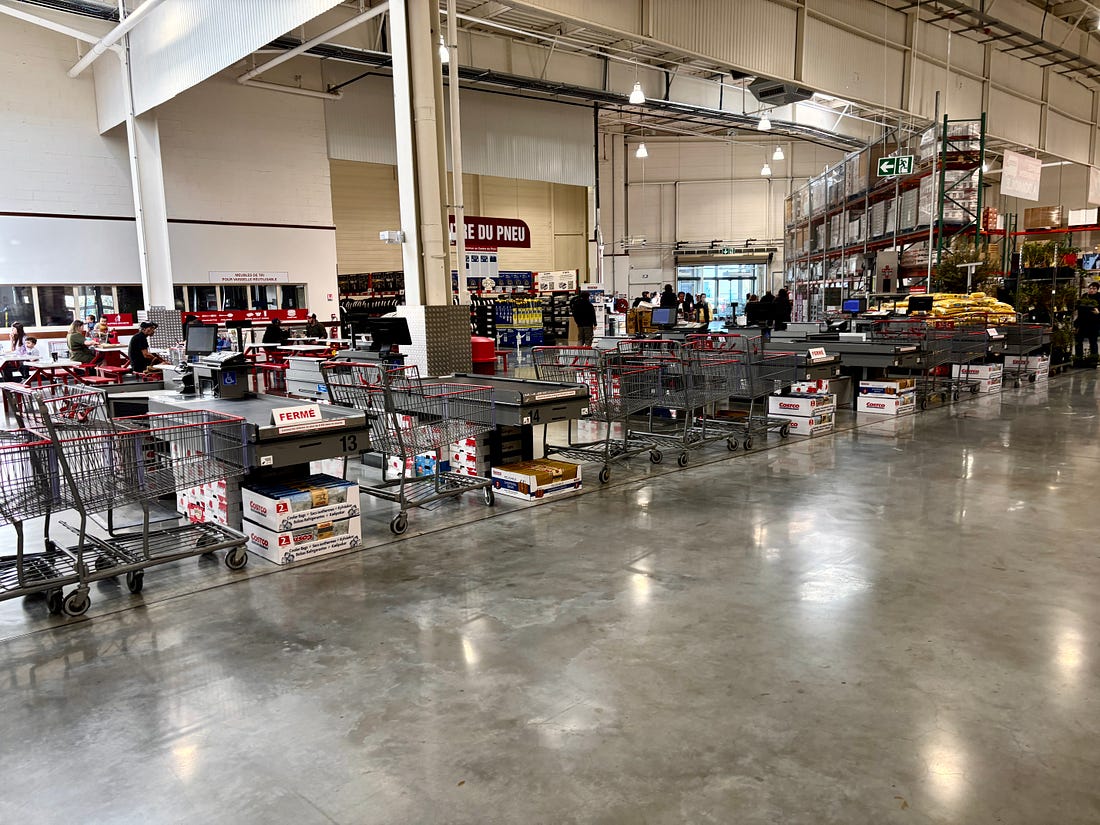
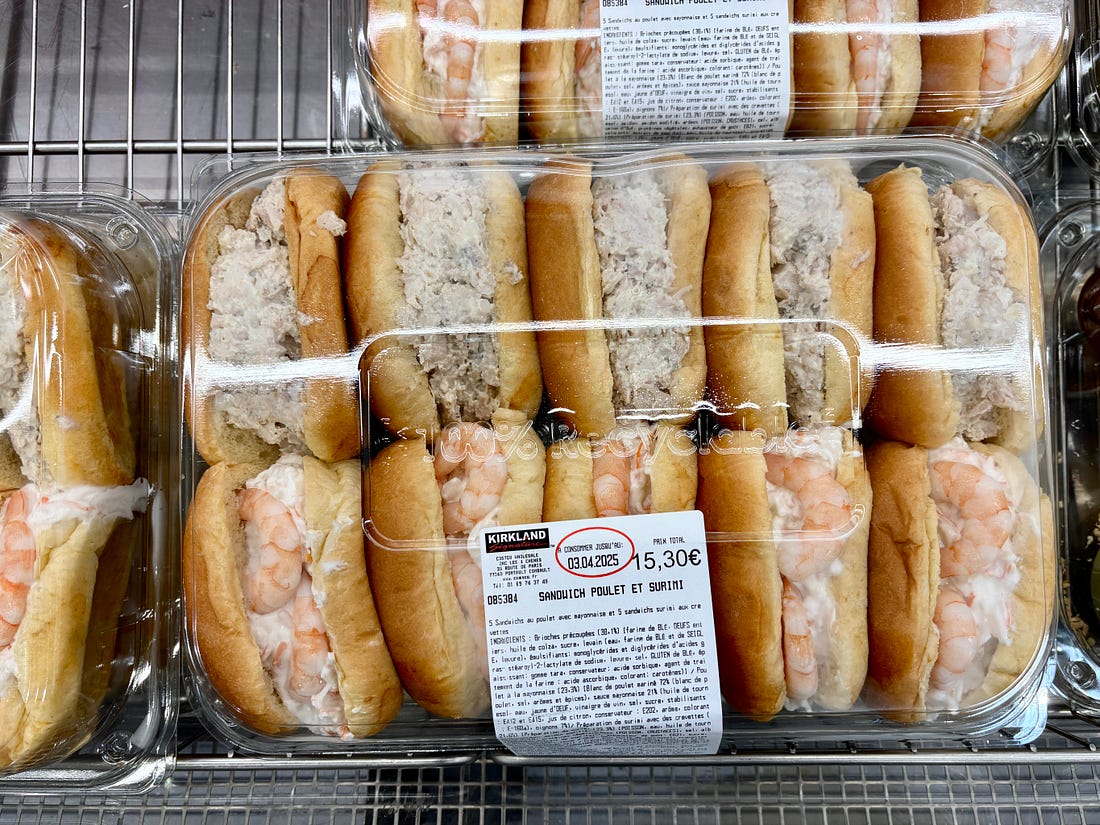
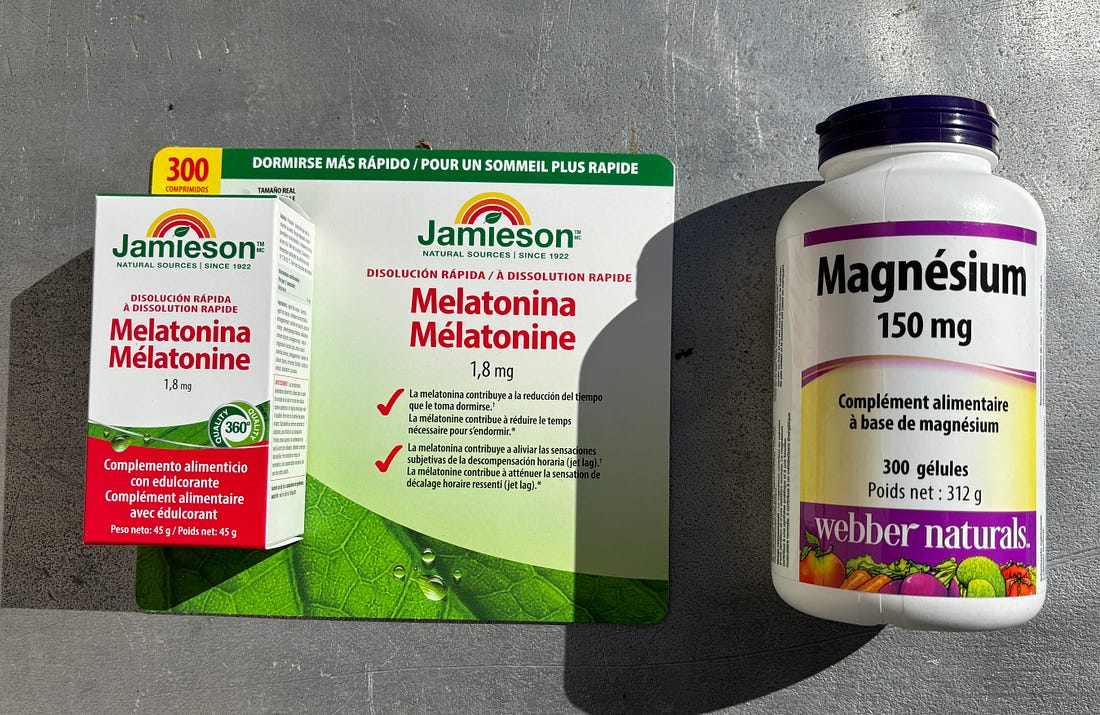
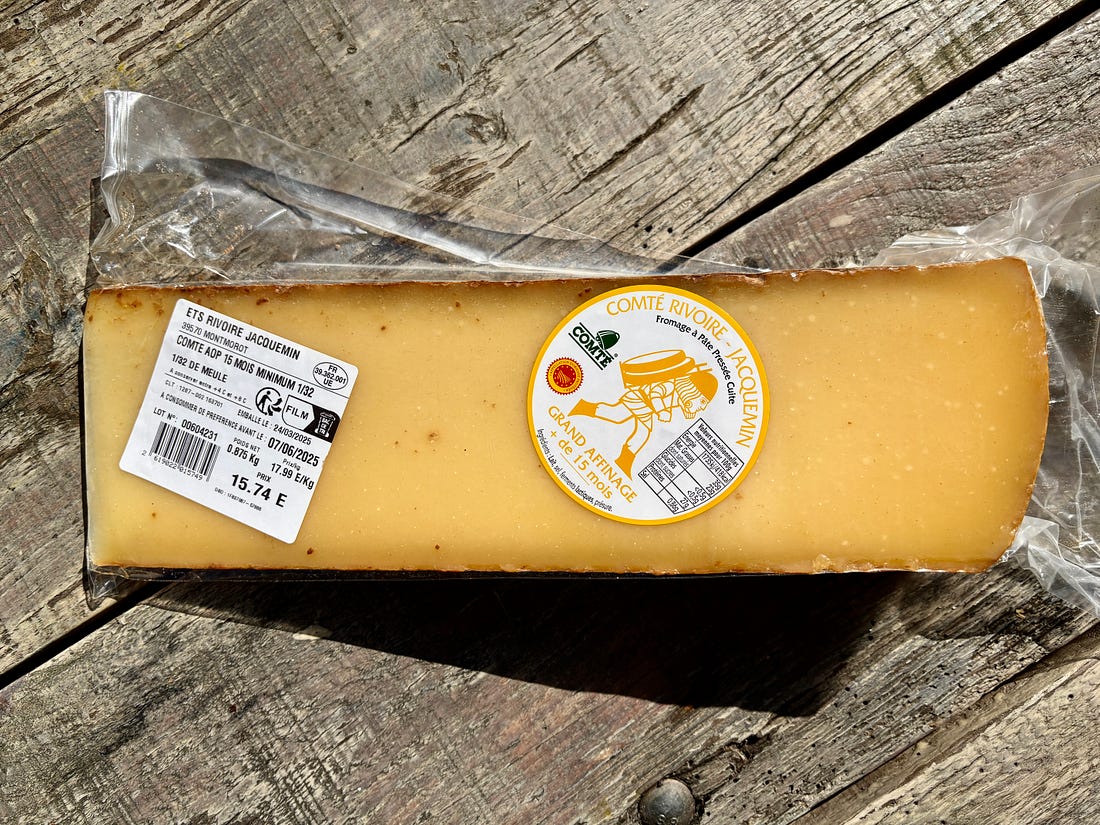
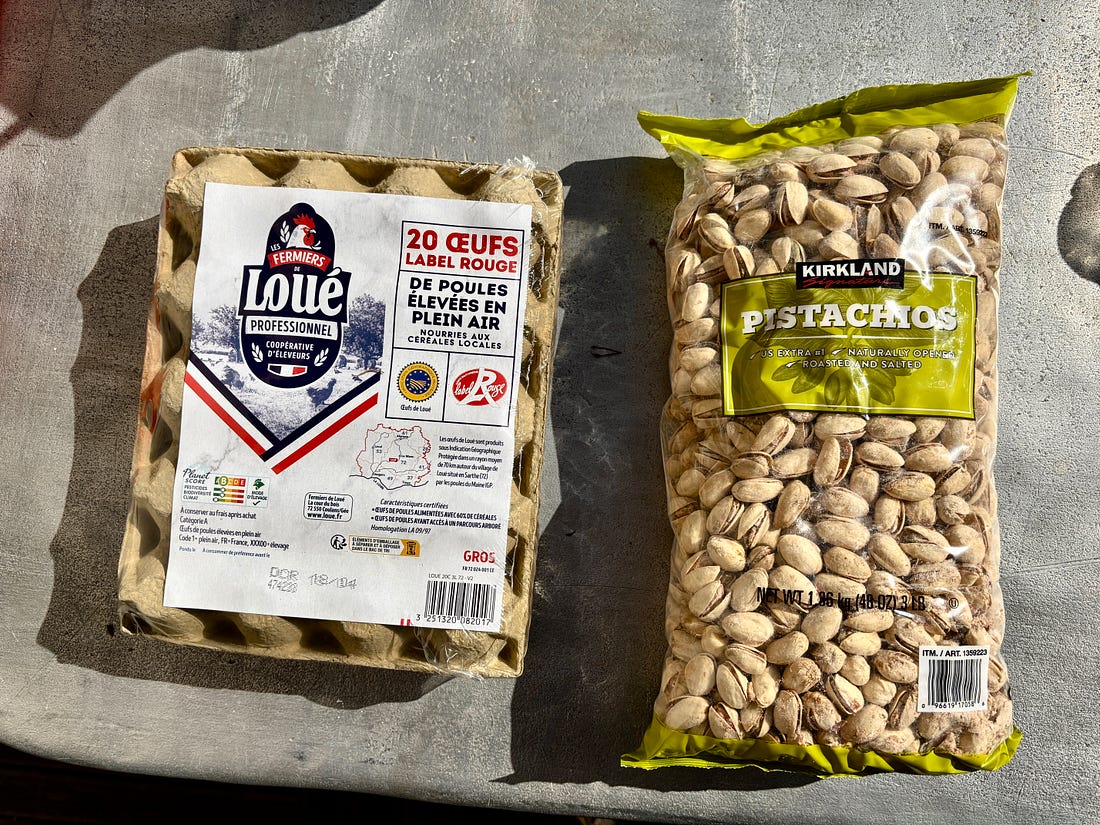
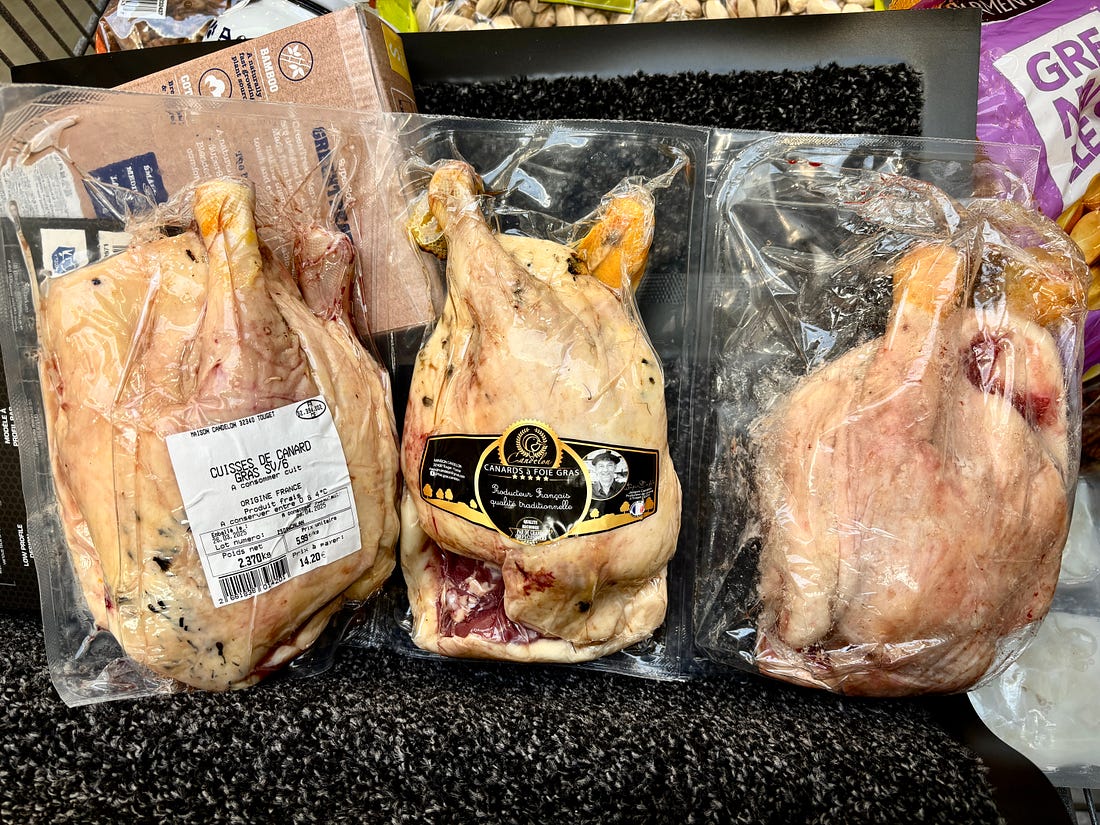
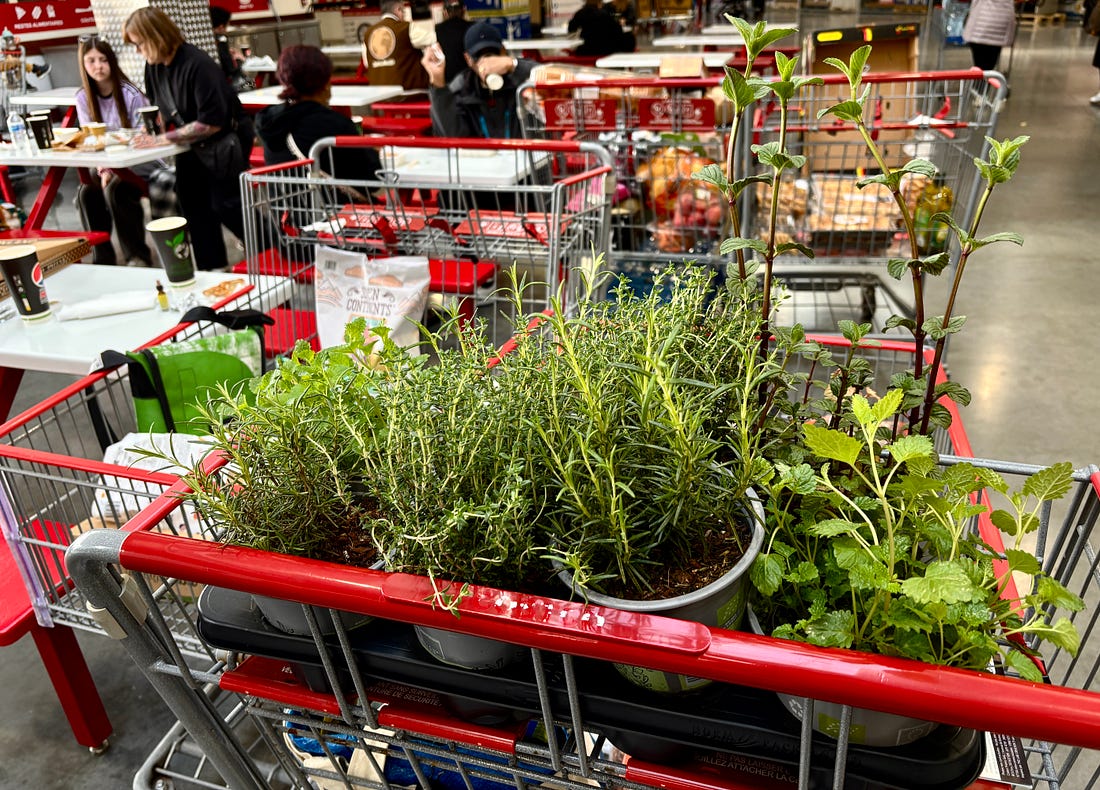
No comments:
Post a Comment